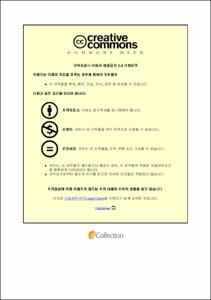다중형광염색 및 RNA 분석을 이용한 위장관 기질 종양의 포괄적 면역 프로파일링 분석: 티로신키나아제 치료의 종양 면역 미세 환경의 영향
- Abstract
- Background: The immune microenvironment of Gastrointestinal Stromal Tumors (GISTs) is largely unknown and there is no approved immunotherapeutic agent for the treatment of advanced GISTs. To investigate the potential application of novel immunotherapeutic strategies, we analyzed the immune microenvironment in tumors from patients with GISTs.
Methods: A total of 80 surgical specimens of advanced GISTs were acquired from 67 patients. The specimens were grouped according to the treatment setting: tyrosine kinase inhibitor (TKI)-naïve group (n=20); imatinib-progressed and no exposure to sunitinib or regorafenib (IM-PD group, n=30); and imatinib-progressed, sunitinib and/or regorafenib-treated group (IM-PD/SU-treated group, n=30). Seven-color multiplex immunofluorescence staining was performed on all 80 specimens. RNA sequencing and gene expression analysis for immune-related gene expression were performed on the specimens of 29 patients (TKI-naïve [n=10], IM-PD [n=14], and IM-PD/SU-treated group [n=5]).
Results: In TKI-naïve GISTs, the median number (interquartile range [IQR]) of immune cells per mm2 was: CD3+, 79.2 (22.4-434.5); CD3+/CD8+, 6.7 (1.5-75.6); CD3+/FoxP3+, 4.4 (0.3-28.3); CD68+/CD204+, 2.3 (1.1-41.1); CD68+/CD204-, 8.7 (2.0-20.1); CD3+/PD1+, 0.6 (0-2.0); and CD3+/TIM3+, 0.2 (0-2.5). In IM-PD/SU-treated GISTs, the median number (IQR) of immune cells per mm2 was: CD3+, 302.9 (63.4-502.9); CD3+/CD8+, 38.6 (8.9-105.4); CD3+/FoxP3+, 34.0 (6.6-59.7); CD68+/CD204+, 25.2 (6.4-54.2); CD68+/CD204-, 9.6 (4.0-28.9); CD3+/PD-1+, 2.3 (1.0-3.7); and CD3+/TIM3+, 1.8 (0-12.7). The regulatory T cells (CD3+/FoxP3+), M2 polarized macrophages (CD68+/CD204+), PD-1+ T cells (CD3+/PD-1+), and TIM3+ T cells (CD3+/TIM3+) were increased in the IM-PD/SU-treated group (P=0.047, P=0.023, P=0.016, and P=0.002, respectively).
IM-PD/SU-treated GISTs had increased ratios of infiltrative T cells to tumor cells (CD3+ cells per DOG-1+ cells, P=0.03); PD-1+ T-cells to pan-T cells (CD3+/PD-1+ per CD3+, P=0.002); PD-1+ cytotoxic T cells to pan-T cells (CD8+/PD-1+ per CD3+, P=0.007); PD-L1+ T-cell to pan-T cells (CD3+/PD-L1+ per CD3+, P=0.005); regulatory T cells to pan-T cells (CD3+/FoxP3+ per CD3+, P=0.006); and PD-1+ tumor cells to total tumor cells (DOG-1+/PD-1+ per DOG-1+, P=0.01). Compared to IM-PD GISTs, IM-PD/SU-treated GISTs had increased ratios of cytotoxic T cells to pan-T cells (CD3+/CD8+ per CD3+; P=0.07) and TIM3+ T cells to pan-T cells (CD3+/TIM3+ per CD3+; P=0.03). IM-PD/SU-treated GISTs had increased M2 polarized macrophages compared to TKI-naive GISTs (P=0.049) and marginally increased M2 polarized macrophages compared to IM-PD GISTs (P=0.10).
In the RNA sequencing (RNAseq) analysis, FoxP3 expression was marginally increased in IM-PD/SU treated GISTs compared to TKI-naive GISTs (P=0.11). IM-PD/SU-treated GISTs had marginally increased TIM3 expression compared to IM-PD GISTs (P=0.06). TIGIT expression was significantly increased in IM-PD/SU-treated GISTs compared to IM-PD GISTs (P=0.01).
Conclusion: Immune cell infiltrates were increased and immunosuppressive phenotypes were predominant in the tumors treated with anti-angiogenic agents compared to those that were TKI-naive or treated with imatinib. These findings suggest that this patient population may be appropriate candidates for future immunotherapy clinical trials targeting T cells or macrophages. Further investigation is needed to define optimal immunotherapy strategies in specific subpopulations of patients with GIST.
- Issued Date
- 2018
- Awarded Date
- 2019-02
- Type
- Dissertation
- Alternative Author(s)
- Changhoon Yoo
- Affiliation
- 울산대학교
- Department
- 일반대학원 의학과
- Advisor
- 강윤구
- Degree
- Doctor
- Publisher
- 울산대학교 일반대학원 의학과
- Language
- eng
- Rights
- 울산대학교 논문은 저작권에 의해 보호받습니다.
- Appears in Collections:
- Medicine > 2. Theses (Ph.D)
- 파일 목록
-
-
Download
 200000171758.pdf
기타 데이터 / 1.19 MB / Adobe PDF
200000171758.pdf
기타 데이터 / 1.19 MB / Adobe PDF
-
Items in Repository are protected by copyright, with all rights reserved, unless otherwise indicated.